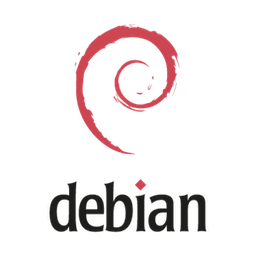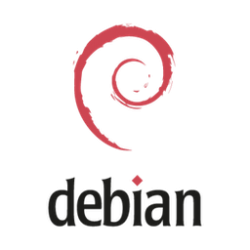
Are you tired of browser limitations and looking for a fast, open-source alternative that respects your privacy? Installing Chromium on Debian might be exactly what you need. Whether you’re a Linux newcomer or a seasoned user, this comprehensive guide will walk you through every method to get Chromium running smoothly on your Debian system.
What is Chromium Browser?
Chromium is the open-source foundation that powers Google Chrome, but without the proprietary components and data collection concerns. Think of it as Chrome’s transparent cousin – you get the same powerful web engine with better privacy controls and complete source code access.
Chromium vs Chrome: Key Differences
While both browsers share the same core engine, there are significant differences you should know about. Chromium doesn’t include Adobe Flash Player, automatic updates, or Google’s proprietary codecs for certain media formats. However, it offers superior privacy since it doesn’t send usage data to Google by default.
Chrome comes with built-in PDF viewer and various Google services integration, while Chromium keeps things minimal and clean. For most users, especially those concerned about privacy, Chromium provides everything needed for excellent web browsing without the corporate tracking.
Why Choose Chromium Over Other Browsers?
Statistics show that Chromium-based browsers account for over 65% of global web usage, making them the de facto standard for web compatibility. Chromium offers blazing-fast JavaScript execution, excellent HTML5 support, and robust security features that make it ideal for Debian users who value both performance and privacy.
Prerequisites for Installing Chromium on Debian
Before diving into the installation process, let’s ensure your system is ready for Chromium.
System Requirements
Your Debian system needs at least 2GB of RAM and 1GB of free disk space for optimal Chromium performance. Most modern Debian installations meet these requirements easily, but older hardware might experience slower performance with multiple tabs open.
Chromium works on both 32-bit and 64-bit Debian systems, though 64-bit installations generally provide better performance and security. If you’re running Debian 10 (Buster) or newer, you’re in great shape for any installation method we’ll cover.
Checking Your Debian Version
Let’s quickly check which Debian version you’re running. Open your terminal and type:
lsb_release -aThis command reveals your Debian version, codename, and other system details. Knowing your version helps determine which installation method works best for your setup.
Required Permissions and Access
You’ll need sudo privileges or root access to install Chromium system-wide. Most installation methods require administrative rights to modify system packages and repositories. If you’re using a personal Debian installation, you likely have these permissions already.
Method 1: Installing Chromium via APT Package Manager
The APT package manager is the most straightforward way to install Chromium on Debian. This method integrates perfectly with your system’s package management and provides automatic security updates.
Updating Package Lists
First, let’s refresh your package database to ensure you’re getting the latest available versions:
sudo apt updateThis command contacts Debian repositories and downloads the latest package information. It’s like refreshing your app store before installing new software – you want the most current versions available.
Installing Chromium Browser
Now comes the exciting part – actually installing Chromium:
sudo apt install chromiumThe installation process typically takes 2-5 minutes depending on your internet connection and system speed. APT automatically handles dependencies, so you don’t need to worry about missing libraries or components.
During installation, you might see some configuration prompts. The default settings work perfectly for most users, so feel free to press Enter to accept defaults unless you have specific requirements.
Verifying the Installation
Let’s confirm Chromium installed correctly:
chromium --versionThis command should display the installed Chromium version number. If you see version information, congratulations – Chromium is ready to use! You can launch it from your applications menu or by typing chromium in the terminal.
Method 2: Installing Chromium Using Snap Packages
Snap packages offer a modern approach to software distribution, providing sandboxed applications with automatic updates. This method is particularly useful if you want the latest Chromium version without waiting for Debian repository updates.
Installing Snapd on Debian
First, we need to install the Snap package manager:
sudo apt update
sudo apt install snapdAfter installation, you might need to restart your system or log out and back in to ensure all snap components are properly initialized. Snap creates its own environment that’s slightly different from traditional Debian packages.
Installing Chromium via Snap
Installing Chromium through Snap is remarkably simple:
sudo snap install chromiumSnap downloads and installs Chromium in a secure container, isolated from the rest of your system. This approach provides excellent security but might have slightly slower startup times compared to native packages.
The snap version often includes the latest Chromium features before they reach Debian’s stable repositories, making it perfect for users who want cutting-edge functionality.
Managing Snap-Installed Chromium
Snap packages update automatically, but you can manually trigger updates:
sudo snap refresh chromiumTo see installed snap packages:
snap listThis shows all your snap applications, including Chromium’s version and last update date.
Method 3: Installing Chromium from Flatpak
Flatpak represents another modern packaging approach, offering similar benefits to Snap with slightly different implementation details. Some users prefer Flatpak’s approach to permissions and integration.
Setting Up Flatpak Repository
Install Flatpak and add the Flathub repository:
sudo apt install flatpak
flatpak remote-add --if-not-exists flathub https://flathub.org/repo/flathub.flatpakrepoYou’ll need to restart your session after this step to ensure proper integration with your desktop environment.
Installing Chromium via Flatpak
Install Chromium using Flatpak:
flatpak install flathub org.chromium.ChromiumFlatpak creates its own runtime environment, ensuring Chromium runs consistently regardless of your system’s library versions. This approach is excellent for maintaining stability across different Debian versions.
Method 4: Building Chromium from Source Code
Building from source provides maximum customization and the absolute latest features, but requires significant time and system resources.
When to Consider Source Installation
Source compilation makes sense if you need specific patches, custom optimizations, or the bleeding-edge development version. However, it requires several gigabytes of disk space and can take hours to complete on slower systems.
Most users should stick with package managers unless they have specific development needs or want to contribute to Chromium development.
Dependencies and Build Requirements
Source building requires development tools and libraries:
sudo apt install build-essential git python3 python3-devYou’ll also need depot_tools, Google’s collection of utilities for Chromium development. The complete build process requires at least 8GB of RAM and 50GB of free disk space.
Step-by-Step Source Compilation
Due to the complexity and time requirements, source compilation is beyond most users’ needs. If you’re determined to build from source, follow the official Chromium build documentation, which provides detailed instructions for each platform.
Configuring Chromium After Installation
Once Chromium is installed, some initial configuration ensures optimal performance and security.
Initial Setup and Privacy Settings
Launch Chromium and navigate to Settings > Privacy and Security. Disable usage statistics and crash reports if privacy is important to you. Enable “Do Not Track” requests and consider using enhanced protection for safe browsing.
Set your default search engine – unlike Chrome, Chromium doesn’t default to Google Search, giving you freedom to choose privacy-focused alternatives like DuckDuckGo or StartPage.
Installing Essential Extensions
Chromium supports Chrome Web Store extensions. Consider installing uBlock Origin for ad blocking, HTTPS Everywhere for security, and Privacy Badger for tracking protection. These extensions significantly enhance your browsing experience and security.
Optimizing Performance Settings
Navigate to Settings > Advanced > System and enable hardware acceleration if your system supports it. This dramatically improves video playback and graphics performance. Adjust memory usage settings based on your system’s RAM – if you have 8GB or more, Chromium can handle dozens of tabs comfortably.
Troubleshooting Common Installation Issues
Even straightforward installations can encounter hiccups. Here are solutions for the most common problems.
Permission Denied Errors
If you see permission errors, ensure you’re using sudo with installation commands. Some users forget to add sudo before apt or snap commands, resulting in failed installations.
Check your user is in the sudo group:
groups $USERIf sudo isn’t listed, ask your system administrator to add you to the sudo group.
Dependency Conflicts
Dependency conflicts occur when different packages require incompatible library versions. This is rare with Chromium but can happen on systems with mixed package sources.
Use APT’s fix-broken command:
sudo apt --fix-broken installThis command resolves most dependency issues automatically.
Graphics and Display Problems
If Chromium displays incorrectly or crashes frequently, disable hardware acceleration in Settings > Advanced > System. Older graphics drivers sometimes conflict with Chromium’s rendering engine.
For persistent issues, try launching Chromium with software rendering:
chromium --disable-gpuManaging and Updating Chromium
Proper maintenance keeps Chromium secure and performing optimally.
Automatic Updates vs Manual Updates
APT-installed Chromium updates automatically with your system updates. Run sudo apt upgrade regularly to ensure you have the latest security patches.
Snap and Flatpak versions update automatically by default, but you can control update timing in their respective settings.
Removing Chromium Completely
To remove APT-installed Chromium:
sudo apt remove chromium
sudo apt autoremoveFor Snap:
sudo snap remove chromiumFor Flatpak:
flatpak uninstall org.chromium.ChromiumSecurity Best Practices
Chromium security requires ongoing attention and good browsing habits.
Keeping Chromium Updated
Regular updates are crucial for security. Enable automatic updates and restart Chromium when prompted for updates. Security patches often address critical vulnerabilities that could compromise your system.
Monitor Chromium’s security blog for important announcements about vulnerabilities and recommended actions.
Browser Security Settings
Enable two-factor authentication for accounts you access through Chromium. Use strong, unique passwords and consider a password manager. Enable safe browsing features and be cautious about downloading files from unknown sources.
Regular profile cleanup removes accumulated data that could pose privacy risks. Clear browsing data periodically, focusing on cookies and cached files from unknown websites.
Frequently Asked Questions (FAQs)
Q1: Is Chromium completely free and open source?
Yes, Chromium is entirely free and open source under the BSD license. Unlike Chrome, it contains no proprietary components and doesn’t collect user data for Google. You can examine, modify, and redistribute the source code freely.
Q2: Can I sync my data between Chrome and Chromium?
Chromium doesn’t include Google account sync by default. However, you can manually export bookmarks and settings from Chrome and import them into Chromium. Third-party sync services like Firefox Sync can provide cross-browser synchronization.
Q3: Which installation method provides the best performance?
APT installation typically offers the best performance as it integrates natively with your Debian system. Snap and Flatpak versions might have slightly slower startup times due to their sandboxed nature, but performance differences are minimal during normal browsing.
Q4: Does Chromium support Netflix and other DRM-protected content?
Standard Chromium doesn’t include DRM components needed for Netflix and similar services. You’ll need to install additional packages like chromium-widevine or use the Snap version, which includes necessary codecs for protected content.
Q5: How do I switch from Chrome to Chromium without losing my data?
Export your Chrome bookmarks via Settings > Bookmarks > Bookmark Manager > Organize > Export bookmarks. Import this file into Chromium using the same path. Copy saved passwords using Chrome’s password export feature and import them into Chromium’s password manager.
